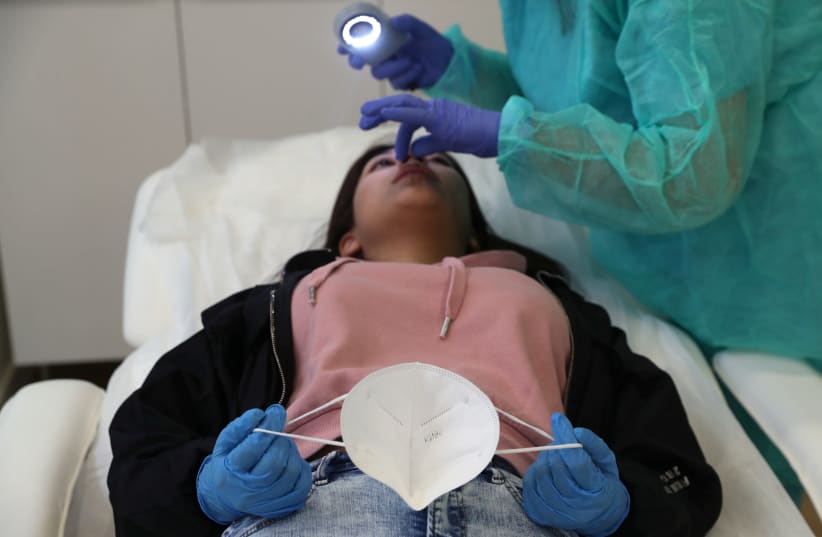Most COVID-19 patients who are placed on a mechanical ventilator do not survive, according to a study published by the Journal of the American Medical Association. However, for those who do, the road to recovery is much longer than one might expect.
“Most patients who were intubated have ventilator-induced lung injury,” Prof. Galia Rahav, head of the Infectious Disease Unit and Laboratories at Sheba Medical Center in Tel Hashomer, told The Jerusalem Post. “Usually, after several weeks ventilated in the intensive-care unit, we hospitalize them in a rehabilitation unit for another several weeks, and then we will still want to see them after they are sent home.”
Some never fully recover, Dr. Michael Rodricks, medical director of the intensive-care unit at Robert Wood Johnson University Hospital Somerset in New Jersey, told Bloomberg, and those who do, must often relearn basic skills, such as walking, talking and swallowing.
What is going on?
Prof. Cyrille Cohen, vice dean of the Mina and Everard Goodman Faculty of Life Sciences at Bar-Ilan University, said COVID-19 can cause severe fibrosis or scarred tissue in the lungs.
“When we cut ourselves, our body replaces whatever cells were damaged with scarred tissues, and this can happen in organs too – our liver, kidneys and, in the case of coronavirus, our lungs,” he said.
Healthy lungs bring fresh oxygen into our blood and remove the carbon dioxide that our bodies don’t need, Cohen said. Scarred tissue is thick and stiff and replaces lung cells, making it more difficult for our lungs to work properly. As fibrosis worsens, a person becomes progressively shorter of breath.
For ventilated patients, the aftereffects are even worse, he said.
One of the results of long-term ventilation – and with COVID-19, people can be intubated for as long as three or four weeks – is that they slowly lose their independent capacity to breathe, which can lead to a diverse group of long-term effects, Cohen said.
“These patients have to learn to breathe anew,” he said. “Some people can take several months to years to be able to breathe normally.”
Other times, although the person is ventilated, doctors cannot be sure that the oxygen supply was adequate, and certain tissues can die as a result.
Many COVID-19 patients have small blood clots in their bodies.
“It seems the virus is causing uncontrolled blood clotting,” Cohen said. These clots can end up in the lungs, heart, brain or other areas if they break away and travel through the blood, which disrupts the flow of blood to important organs and may facilitate a heart attack or stroke.
Alternatively, because the scientific and medical community discovered this challenge, many patients have been put on anticoagulants, which can have the opposite effect. Rather than a clot, the blood becomes too thin, or “leaky,” and might promote internal bleeding.
“Let’s say you open your faucet and try to get water out, but you don’t see any water,” Cohen said. “There could be one of two reasons: an obstruction [clot] in the pipe or a leak – the water is coming out, but somewhere else.”
Dr. Hassan Khouli, chair of the Department of Critical Care Medicine at the Cleveland Clinic, told Bloomberg some patients develop “Post-ICU syndrome… These patients become deconditioned. They behave like they are really paralyzed, as if they are quadriplegics. They can barely move their muscles.”
Rahav said of the ventilated patients treated at Sheba, only one patient – a pregnant woman who was intubated for a month – went home and resumed life, fully functional and without any problems. The rest are still in treatment.
Cohen said autopsies are being performed on COVID-19 victims to get a better understanding of the impact of the disease on the human body. “But you cannot do that on an alive patient,” he said, adding that the virus is new, and there is much that the medical community still does not know.
What we do know is that it is not just coronavirus patients who suffer from the impact of ventilators. In recent years, scientists realized that the biological responses to ventilation kick in almost immediately, including the atrophying of the muscles that typically handle breathing. Since patients are often sedated as well, this immobilizes other parts of their bodies and leads to general weakness.
Some studies indicate that the risk of dying within a year of weaning off a ventilator is higher than average, depending on the number of days spent on the machine and other health conditions.
“We know that the disease causes a tremendous amount of damage both to the lungs and other organs, and the process of recovery is very extended, and the damage may be permanent,” MIT-trained physicist Yaneer Bar-Yam told the Post.
Rahav said Sheba has launched a post-coronavirus clinic in which doctors will see all discharged COVID-19 patients, including those who were and were not on ventilators. They already are seeing people who suffer from fatigue, headaches and problems similar to post-traumatic stress disorder, she said.
“We have more to learn,” Rahav said. “This is quite a new and puzzling disease.”
